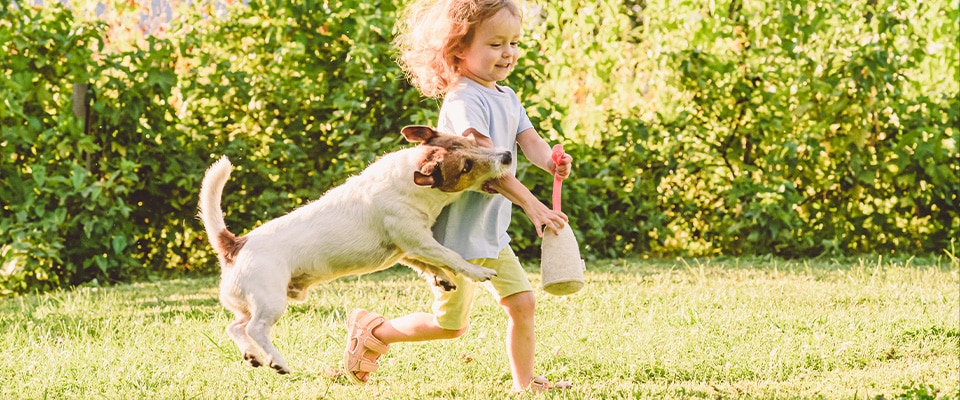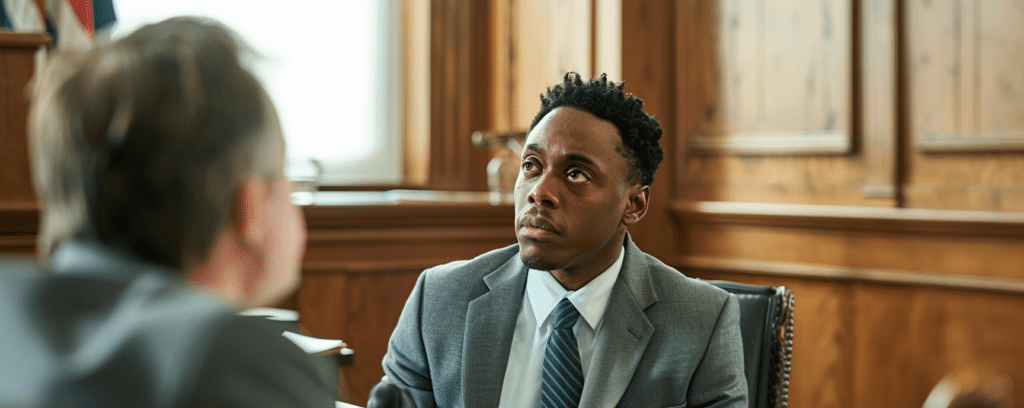What to Do When Your Dog Bites Someone for the First Time? – Explained
Last updated Friday, December 20th, 2024

What to do when your dog bites someone for the first time is a pressing question that requires immediate, clear answers. In this article, learn the critical steps to take in the aftermath, including providing first aid to the injured party, securely handling your dog, navigating the legal terrain, and implementing strategies to prevent future incidents. No sugar-coating, just the essential information you need right now.
Key Takeaways
- Immediate action after a dog bite should involve assessing the bite’s severity, identifying triggers, and staying calm to manage the situation while securing the dog’s safety.
- Provide immediate assistance to the bite victim through first aid, encourage medical attention, and exchange information including the dog’s vaccination records for legal and medical purposes.
- Understand and adhere to local dog bite laws, report the incident to authorities, consult a lawyer, and take preventative measures like professional dog training, socialization, and regular veterinary care to reduce the risk of future incidents.
Assessing the Situation
The moment a dog bite occurs, the immediate step is to assess the situation. This involves evaluating the severity of the bite, identifying triggers that led to the incident, and most importantly, staying calm to control the situation and prevent further escalation. After all, understanding the situation and responding appropriately is the first step in managing the incident and preventing future ones.
Severity of the Bite
Dog bites can range from inhibited nips to severe bites causing serious injuries. It’s important to assess the extent of the inflicted damage, the dog’s aggression level, and whether the dog tried to avoid the bite. Remember, over 99% of dog bite incidents are at the less serious end of the spectrum, but any dog bite injury should be taken seriously.
Identifying Triggers
Identifying what triggered the dog to bite is essential. Dogs may bite due to fear, stress, pain, or protection instincts. Look for signs of a stressed or anxious dog, such as growling, stiff body language, or snapping at the air.
Recognizing these signs can be instrumental in understanding and managing the dog’s behavior.
Staying Calm
Keeping your cool is crucial in these situations. By staying calm, you prevent further escalation, ensuring the safety of the injured party and your dog. Avoid raising your voice or exhibiting signs of stress, which can further agitate the dog.
Providing Immediate Assistance
Once the situation is under control, your focus should shift to providing immediate assistance. This should start with:
- Administering first aid to the victim
- Encouraging them to seek medical attention
- Sharing your contact details, as well as your dog’s vaccination records, with the injured person.
First Aid
Begin first aid by applying direct pressure with a clean, dry cloth to stop any bleeding. Then, clean the wound with mild soap and warm, running water for 3 to 5 minutes.
After cleaning, apply an antibacterial ointment to prevent infection and cover the wound with a dry, sterile bandage.
Seek Medical Help
Encourage the injured person to seek immediate medical attention. This is especially important for preventing potential infections like rabies and tetanus.
Provide the bite victim with your dog’s vaccination status to aid their medical evaluation and treatment.
Exchange Information
After administering first aid, it’s important to exchange contact information with the injured person. Be prepared to provide your insurance information and your dog’s vaccination and vet records. This exchange of information is crucial for both the medical evaluation of the bitten person and potential legal implications.
Securing Your Dog
Securing your dog after a bite incident is an important step to ensure everyone’s safety. This involves removing the dog from the scene, observing their behavior, and considering muzzling if necessary.
Remove Dog from Scene
Immediately after the incident, move your dog away from the victim. This could be by leading them to another room or securing them in a crate. This prevents further incidents and allows the dog to relax and calm down.
Assess Dog’s Behavior
After securing your dog, it’s important to assess their behavior. Look for signs of stress, fear, or aggression that might have contributed to the bite. Remember, a dog that has bitten once might bite again, so it’s crucial to address any aggressive behavior.
Consider Muzzling
If your dangerous dog shows aggressive tendencies, consider using a muzzle to prevent further bites. This could be a requirement in some cases, depending on local regulations or your insurance policy.
Legal Implications and Reporting the Incident
Understanding the legal implications of a dog bite is essential. This involves familiarizing yourself with local laws, reporting the incident to authorities, and consulting a lawyer at Isaacs & Isaacs.
Local Laws
Dog bite laws vary by state. They generally fall into two systems: strict liability and one-bite rules. Under strict liability laws, dog owners are often held accountable for bites, regardless of the dog’s previous behavior.
On the other hand, in one bite rule states, usually the dog owner is held liable in dog bite cases only after evidence of the dog’s potential aggression, such as when a dog bites someone, is shown.
Reporting to Animal Control
It’s essential to report a dog bite to the appropriate authorities such as animal control or the police. After the bite incident, make sure to give the victim your contact information and your dog’s medical history within 48 hours. This will help the victim and ensure proper care for your dog.
Consult a Lawyer
As a dog owner, it’s crucial to understand your legal rights and responsibilities following a dog bite incident. Consult an attorney for legal advice. They can provide essential testimony in court regarding the specifics of the dog bite based on their assessments.
Preventing Future Incidents
Preventing future incidents is an integral part of the responsibility of owning a dog. This can be achieved through professional training, dog socialization, and regular check-ups.
Professional Training
Seeking help from a professional trainer or a veterinarian experienced in canine behavior is essential. They can help identify the reason behind the dog’s aggression and establish appropriate training. Consistent, reward-based training can help in developing good behavior and enhancing impulse control, reducing the tendency of a dog to bite.
Dog Socialization
Socialization plays a pivotal role in a dog’s behavior. Early and varied exposure to different stimuli can build a dog’s confidence and reduce their anxiety-related aggression. A lack of socialization can lead to unpredictable reactions, including an increased risk of aggressive behavior such as biting.
Regular Check-ups
Regular veterinary check-ups can help discover health issues early, which is critical for addressing any underlying medical conditions that may be causing aggression in dogs. Some important aspects of regular veterinary care include:
- Vaccinations
- Dental health maintenance
- Parasite prevention and control
- Regular physical examinations
By ensuring that your dog receives regular veterinary care, you can indirectly influence their behavior and help prevent aggression and dog biting incidents, reducing the chances of a dog bite occurring.
Understanding Your Dog’s Breed and Temperament
Understanding your dog’s breed and temperament can greatly impact their behavior. By researching your dog’s breed characteristics, you can manage breed-specific behaviors more effectively.
Breed Characteristics
Each dog breed has distinct characteristics and tendencies that have been shaped over centuries of selective breeding. Whether it’s a Collie’s herding instincts or a Terrier’s lively demeanor, understanding these characteristics can help you manage your dog’s behavior effectively.
Managing Breed-Specific Behavior
Managing your dog’s behavior involves tailoring strategies to accommodate breed-specific characteristics and temperament. Teaching basic commands, applying consistent reward-based training, and understanding your dog’s specific traits can significantly reduce aggressive tendencies and minimize the risk of dog bites.
Insurance Coverage and Financial Responsibilities
Understanding your financial responsibilities after a dog bite incident is critical. This includes confirming coverage in your homeowner’s or renter’s insurance policy and being prepared for potential compensation claims.
Homeowner’s or Renter’s Insurance
Check your homeowner’s or renter’s insurance policy for liability coverage for dog bites. Be aware that after a dog bite incident, some insurance companies may choose to:
- Not renew the policy
- Exclude the dog from coverage
- Require dog owners to sign liability waivers
- Impose higher premiums for certain breeds.
Potential Compensation
In the event of a dog bite, victims can pursue compensation for medical expenses, lost wages due to inability to work, and emotional distress caused by the incident. As a dog owner, you should be prepared for these potential claims.
Frequently Asked Questions
Can I trust my dog after biting?
It’s hard to guarantee that your dog won’t bite again after the first incident. It’s important to be cautious and seek professional advice when dealing with aggression in dogs.
What should I do immediately after my dog bites someone?
After your dog bites someone, assess the severity of the bite, administer first aid, seek medical help for the victim, and exchange information with the victim, including your contact details and your dog’s vaccination records. It’s important to act promptly and responsibly in this situation.
How can I prevent my dog from biting again?
To prevent your dog from biting again, consider professional training, dog socialization, regular veterinary check-ups, and understanding your dog’s breed and temperament. These proactive steps can help manage and prevent breed-specific behaviors.
What are my legal responsibilities as a dog owner?
As a dog owner, it is important to understand your local dog bite laws, report any incidents to authorities, and be prepared for potential compensation claims for various expenses. It’s essential to take these legal responsibilities seriously to ensure the safety of others.
How can insurance help me in a dog bite incident?
Insurance can help cover the liability for dog bite incidents, but it’s important to be aware that some insurance companies may have specific terms and conditions regarding coverage, such as breed restrictions or potential policy changes after an incident.











